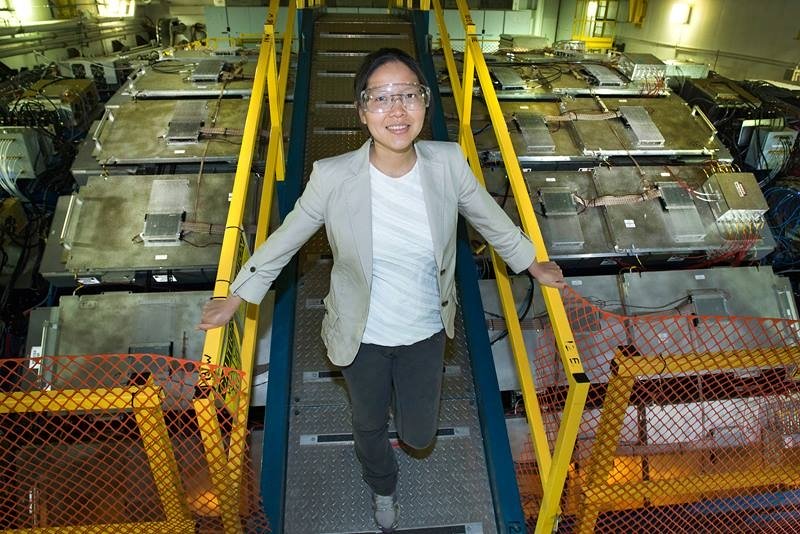The Science
Quarks and gluons are fundamental building blocks of matter that are usually confined within larger subatomic particles such as protons and neutrons. Nuclear physicists are using new detector components to explore how quarks and gluons can be set “free” from confinement. Their measurements reveal that the “quark-gluon plasma” (QGP) of free quarks and gluons created in nuclear collisions destroy a type of particle, known as J/psi, that confines a quark and antiquark. The destruction of J/psi particles therefore leads to what physicists call deconfinement. Tracking how different collision conditions reduce the production of J/psi particles will help physicists understand the strong interaction that usually binds quarks and antiquarks. It will also help them understand how the QGP disrupts the binding interaction.
The Impact
Understanding deconfinement in the QGP is one of the greatest challenges facing physicists. This new research addresses this challenge by looking at the behavior of J/psi particles in the QGP. Studying J/psi particles in the QGP will also help scientists infer the temperature of this hot, dense medium. Comparing measurements with theoretical predictions will test physicists’ understanding of. The results will potentially enable nuclear physicists to refine the theory—and their understanding—of how the nuclear strong force brings about confinement and deconfinement.
Summary
Researchers have published their first results from the Muon Telescope Detector (MTD), part of the STAR collaboration at the Relativistic Heavy-Ion Collider (RHIC), a Department of Energy (DOE) Office of Science user facility at Brookhaven National Laboratory for the study of nuclear physics. The energy released by collisions at RHIC—which “melts” atomic nuclei to form QGP—can also generate “charm” quarks that are heavier than those that make up protons and neutrons. These charm quarks pair up with their antimatter counterparts (anti-charm quarks) to form J/psi particles through a mechanism known as hadronization. STAR’s MTD picks up muons, decay products of the J/psi particle, to help identify collisions producing these particles.
In those events, interactions between the multitude of free quarks and gluons in the QGP can “screen out” the charm/anticharm pair’s ability to find one another, resulting in a suppression of how many J/psi decay products show up in the detector. Looking at particles coming out of head-on collisions producing the hottest QGP, STAR measured only one-third of the J/psi particles the researchers would have expected if these particles had not been deconfined (destroyed by the quark-gluon plasma). Studying J/psi suppression will help physicists better understand the strong force that binds the charm and anti-charm quarks within J/psi—and ultimately, the more complex interactions within three-quark composite particles such as the protons and neutrons that make up the bulk of the visible matter in the Universe.
Funding
The Muon Telescope Detector was built with funding from the DOE Office of Science, with contributions from science research agencies in China and India. Research at STAR is supported primarily by the DOE Office of Science, Office of Nuclear Physics, and by the agencies and institutions associated with STAR listed here.
